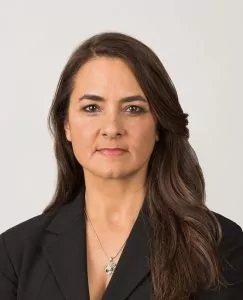Educational Appendix
Scientific Glossary

Jay Short,
Chairman, Chief Executive Officer & Cofounder
Dr. Short is a cofounder of BioAtla© and co-inventor of the BioAtla's patented Conditionally Active Biologics (CAB) platform. He also cofounded Diversa Corporation (now BASF), a pioneering developer of enzymes, antibodies and biologically active compounds, and served in multiple roles including CEO, President and CTO from 1994 to 2005. He led Diversa's public offering, raising over $200 million, which was the largest biotechnology IPO at that time. Prior to Diversa, Dr. Short served as President of Stratacyte, an antibody engineering company and subsidiary of Stratagene (now Agilent), which together with Scripps Clinic was the first to clone and screen human antibody libraries in E. coli. During this time he also served as VP of R&D and Operations for Stratagene Cloning Systems. Dr. Short received his B.A in Chemistry with Honors from Taylor University. At Case Western Reserve University he received his Ph.D. in Biochemistry with additional studies in Macromolecular Science. He is the author of more than 100 publications and is the inventor of over 500 issued patents.
In 2006, Dr. Short was shortlisted by the editors of Nature Biotechnology as one of the people who made the most significant contribution to biotech in the past decade. He is the recipient of numerous other awards, including Ernst & Young's Entrepreneur of the Year Award, the American Chemical Society's Henry F. Whalen, Jr. Award for Business Development, Adaptive Business Leaders' Innovations in HealthCare Gold Award, two of Connect's first place Most Innovative Product Awards, and in 2010 received an international Best-of-the-Best award from the Young Presidents Organization (YPO). Dr. Short's board experience includes 15 years as a director of Invitrogen (now Thermo Fisher), Senomyx, and Taxon Biosciences (now Dupont). He is a member of YPO/WPO and a founder of Capia IP and the E.O. Wilson Biodiversity Foundation. Dr. Short serves as an advisor to educational, commercial, scientific and charitable organizations.

Carolyn Anderson Short
Cofounder
Carolyn Short is a co-founder of BioAtla©, and served as the head of global intellectual property and business strategy for the company from its inception through its IPO until May 2021. While at BioAtla, prior to the IPO, she helped the company raise over $100M out of partnerships with Chinese biopharma companies and investors. She is also a founder, President and COO of Himalaya Therapeutics SEZC. Carolyn has decades of experience in business, intellectual property, and licensing/technology transfer matters in a variety of industries, including healthcare, life science, energy, industrial chemicals, agriculture, foods & flavors, diagnostics, research reagents and cleantech. She holds a degree in Biochemistry & Cell Biology from the University of California, San Diego, and is a registered patent agent with the United States Patent & Trademark Office.

For many drugs toxicity limits the maximum dose of a drug. Therapeutic Index (TI) is a comparison of the amount of drug that causes a therapeutic effect to the amount that causes toxicity. Classically TI refers to the ratio of the dose of drug that causes adverse effects (e.g. toxic dose in 50% of subjects or TD50) to the dose that leads to the desired pharmacological effect (e.g. efficacious dose in 50% of subjects, ED50). A higher therapeutic index is preferable to a lower one: a patient would have to take a much higher dose of such a drug to reach the toxic threshold than the dose taken to elicit the therapeutic effect. The related term Therapeutic Window refers to a range of doses which optimize between efficacy and toxicity, achieving the greatest therapeutic benefit without resulting in unacceptable side-effects or toxicity. In general, it is the exposure of a given tissue to drug (i.e. drug concentration over time), rather than dose, that drives the pharmacological and toxicological effects.
